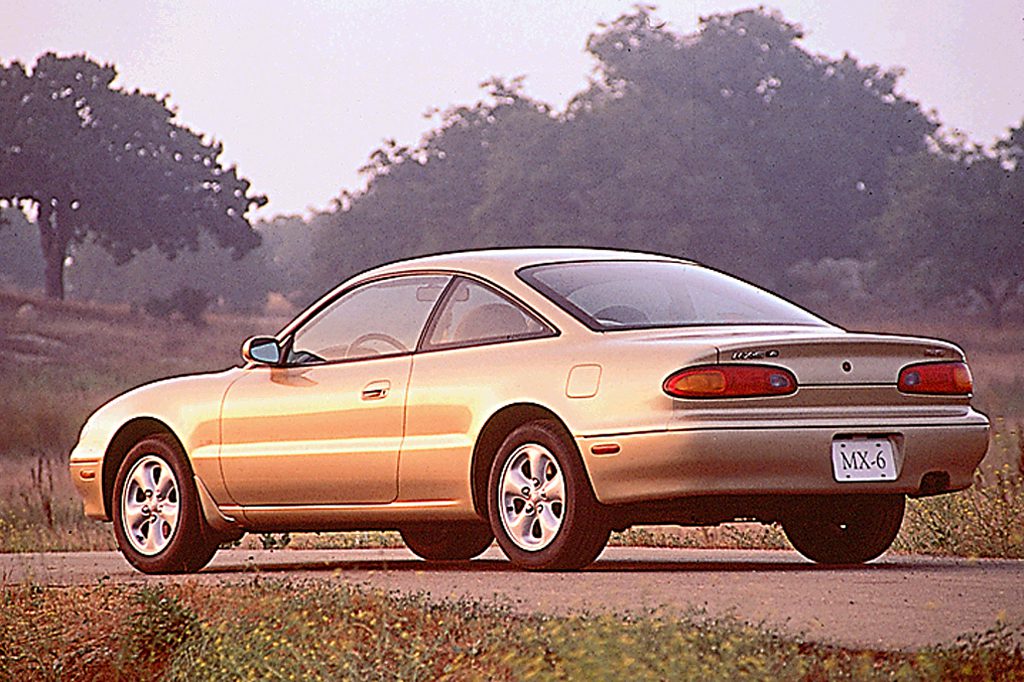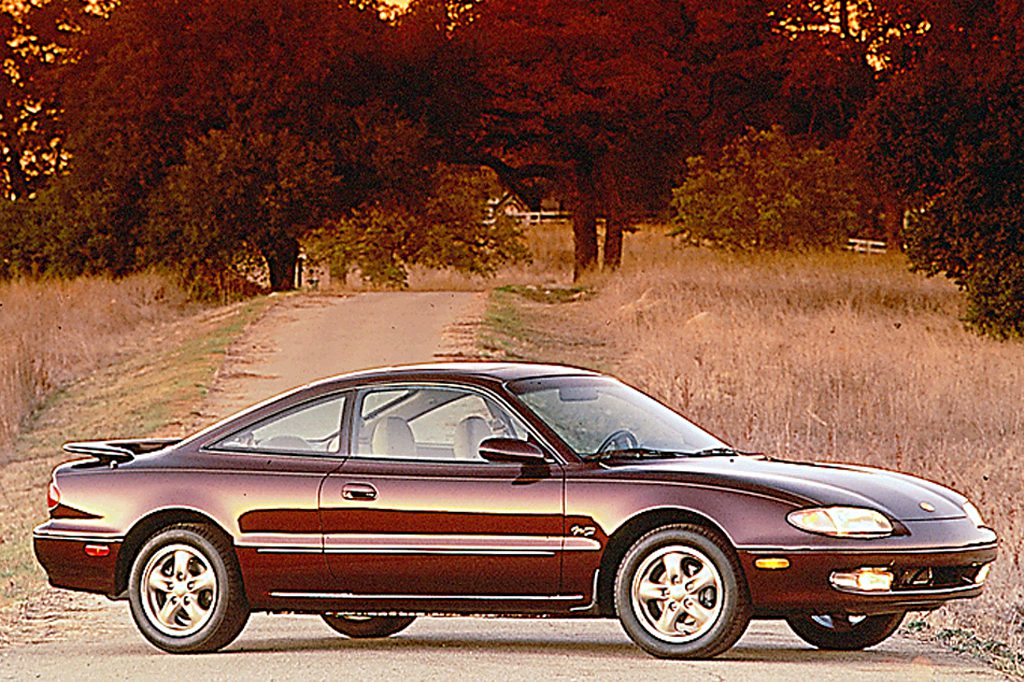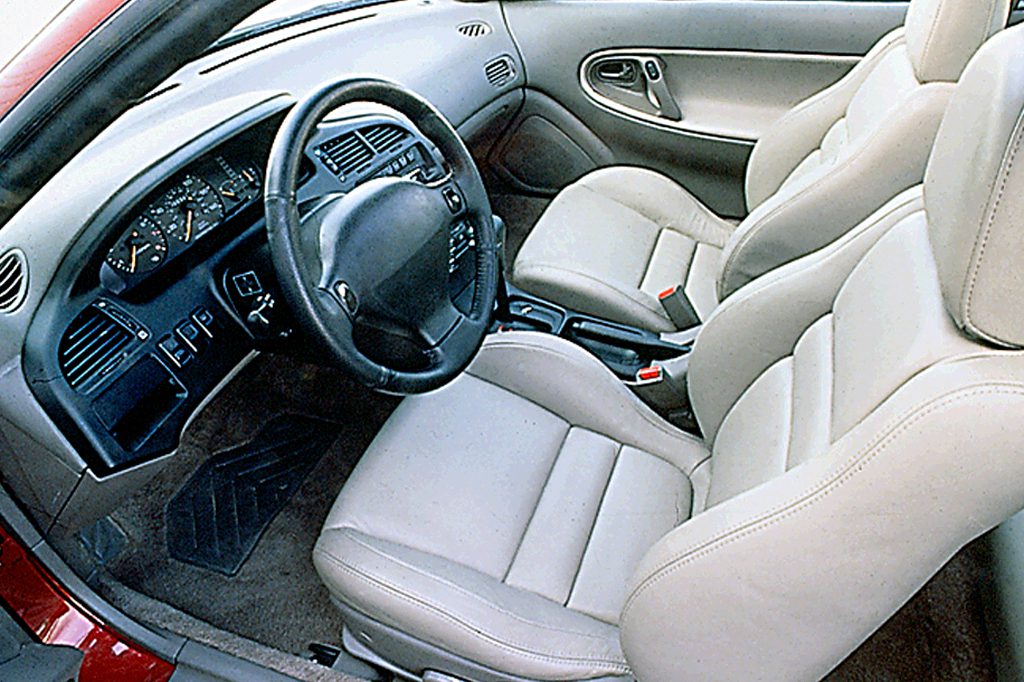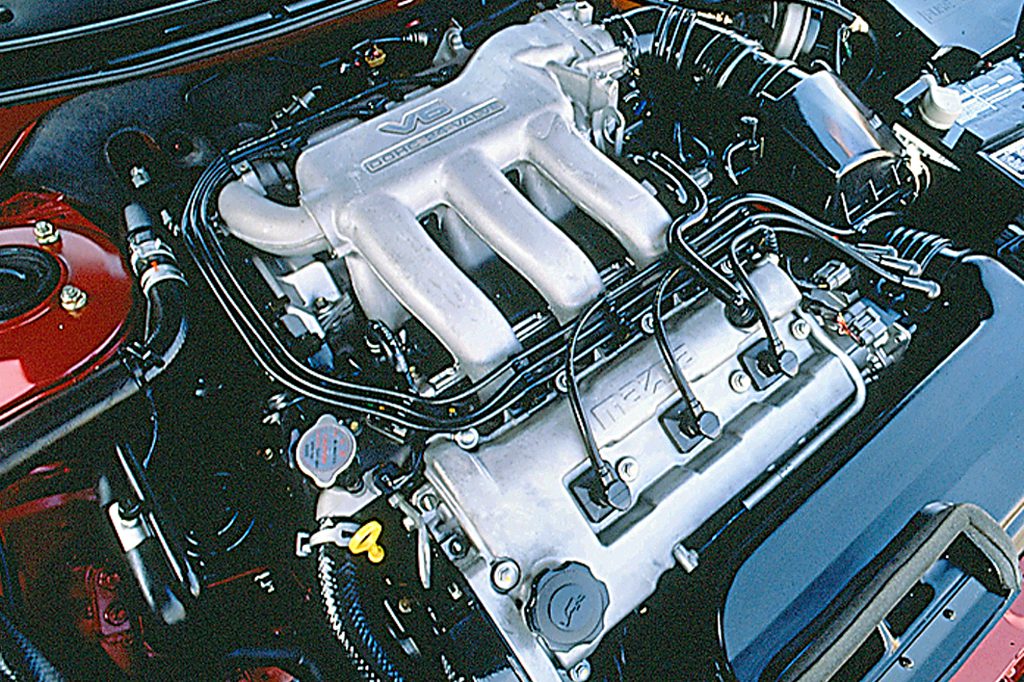| Sporty/performance car; Built in USA |
|
|
| Good condition price range: $1,200 – $2,500* |

1995 Mazda MX-6

1994 Mazda MX-6

1996 Mazda MX-6

1993 Mazda MX-6 interior

1993 Mazda MX-6 V-6 engine
| Pros: |
|
| Cons: |
|
Ford’s Probe has the same mechanical features but at a lower price. Both the MX-6 and Probe are the cream of the crop among sports coupes, in our view.
Overview
The MX-6, Mazda 626 sedan, and Ford Probe were all built in Flat Rock, Michigan, at a plant jointly owned by Mazda and Ford. Powering the MX-6 were both a 4-cylinder and a V6. Base models got a modest 2.0-liter four, while the premium LS version moved out with a 164-horsepower 2.5-liter V6. Both engines were mated to either a 5-speed manual or 4-speed automatic transmission. A driver-side airbag was standard; antilock brakes optional.
Yearly Updates
| 1994 MX-6 New passenger-side airbags for both the base model and up-level LS headline the changes to the MX-6 for 1994. Also, more sound-deadening material has been added to the door panels to reduce unwanted resonance. |
| 1995 MX-6 The premium LS coupe is discontinued for 1995. The base MX-6 is still powered by a 118-horsepower 4-cylinder, but the V6 and the LS equipment can be selected as separate option packages. |
| 1996 MX-6 Mazda decided to go back to “Plan A” and once again offer both a base model and a separate premium LS model. Otherwise, the MX-6 sports coupe is all but unchanged. |
| 1997 MX-6 As the MX-6 entered its final year of production, Mazda made only a few minor changes to the upscale LS version. The 2.5-liter V6 powering the LS adopted sequential fuel injection, boosting the horsepower rating from 160 to 164 at 5600 rpm. |
